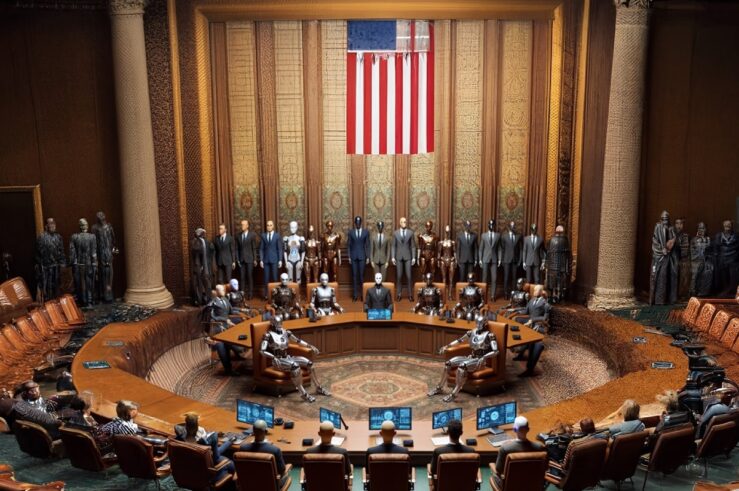In the WSJ, Scott Hemphill (Columbia) and Jeannie Suk (Harvard) defend Charles Schumer’s proposed bill, which would extend copyright protection to fashion design:
Sen. Charles Schumer (D., N.Y.) introduced a bill earlier this month that attempts to get around this problem. It prohibits only design copies that are substantially identical. In layman’s terms, a good way to tell if a copy should be allowed is to ask whether it fails the “squint test”: If you need to squint to see the difference between two designs, then one is an infringing copy of the other.
A knockoff would fail this test if it’s difficult to tell it apart from the original. That means changing barely noticeable details, like moving a button, or using a different thread in some stitching, won’t do the trick. But designs that are merely inspired by prior designs would pass the test and remain legal. The very worst offenders would be caught or deterred. Designers would be left free to riff on—but not rip off—each other’s work. …
Opponents of fashion design protection argue that it would hurt the industry. They imagine a world in which Brooks Brothers monopolizes the pinstripe, or Diane von Furstenberg controls the wrap dress. But that catwalk of horribles has nothing to do with the new fashion bill, which is carefully limited to substantially identical copies of a particular original design.
Some consumers may regret not being able to buy knockoffs that are essentially replicas of desired items. In the long run, though, as with books and movies, the expectation is that consumers will benefit from the wide variety of creative works to which this sensibly narrow copying prohibition gives breathing space. In this case, what is good for American producers is also good for American consumers.
In the NYT, Kal Raustiala (UCLA) and Christopher Sprigman (UVA) argue that extending copyright protection is going to make consumers worse off:
It strikes many people as strange that fashion designs are not already protected against copying. Creative artists like musicians and filmmakers argue, quite persuasively, that their success requires copyright protection for their work. If others could steal it, they say, innovation would grind to a halt.
But there is a good reason that fashion designs have never been protected by copyright. Some designers have lost sales to knockoffs, but the copying of designs has not been a serious threat to the survival of the industry. To the contrary, much of the growth and creativity in the industry depends on imitation.
Why is that? Because of something we all know instinctively about fashion. As Shakespeare put it, “The fashion wears out more apparel than the man.” That is, many people buy new clothes not because they need them, but only to keep up with the latest style.
Without copyright restrictions, designers are free to rework a design and jump on board what they hope will be a money-making style. The result is the industry’s most sacred concept: the trend. Copying creates trends, and trends are what sell fashion. Every season we see designers “take inspiration” from others. Trends catch on, become overexposed and die. Then new designs take their place.
What about the argument that new bill would only restrict “substantially identical” copies of “unique” designs? Raustiala and Sprigman argue that we should be worried about expansive interpretation of the law, and point to patent protection as an alternative:
But the greater risk is that once it’s in the hands of lawyers and judges, such a law would expand in a way that harms many designers and consumers. Plaintiffs’ lawyers would make creative arguments, and judges would tend to interpret the bill’s language expansively. This has been the pattern in copyright for decades. Indeed, lawyers (and those designers who could afford them) would be among the biggest beneficiaries, as disputes would likely erupt into expensive, time-consuming lawsuits featuring designers squabbling over ownership of allegedly unique styles.
In any case, a legal mechanism already exists to protect a truly novel design: a patent. But instead of a specialized federal agency determining what is novel, Senator Schumer’s bill would require that the novelty be assessed by a judge, whose sole experience with fashion might consist of a semi-annual trip to a department store.
To make matters worse, the bill would allow plaintiffs to pursue the wealthiest manufacturers and sellers of fashion. Retailers, for example, could be held liable for any copies they sold. Unlike earlier proposals, Mr. Schumer’s bill contains no requirement that copyrighted designs be registered so that retailers and other designers are put on notice.
Both authors have written lengthier (and very good) articles on the subject. Hemphill and Suk are here; Raustiala and Sprigman are here.




